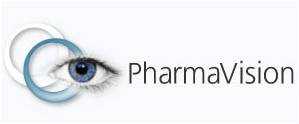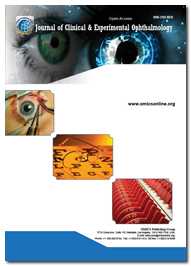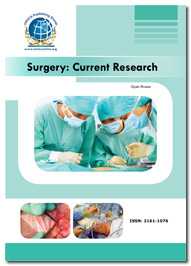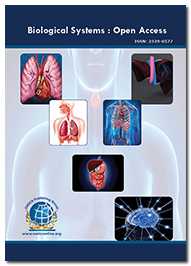Theme: Exploring the novel research and innovations in eye and visual system
Eye 2015
OMICS Group International is an integration of Open Access publications and International Scientific conferences organizers. OMICS Group maintains a scientific network by connecting with different community members all across the globe. OMICS Publishing Group has a team of more than 30,000 Editorial Board Members from various field of science and medical diagnostics, boasting a base to inter connect the overseas knowledge of more than 5 million followers. OMICS Group owns 400 peer-reviewed scholarly Open access journals and organizes more than 300 international conferences every year in the light of collaborating with 1000 more collaborative bodies for hosting national symposium and workshops.
OMICS Group International invites all participants across the world to join the grand International Conference on Eye Disorders and treatment which is going to be held during July 13-15, 2015 at Double Tree Hilton BWI Airport, Baltimore, USA with the theme of “Scientific perspectives for a better vision and to pioneer innovations in ocular treatment & care”. Eye-2015 conference will concentrate on latest and exciting innovations in areas of eye surgeries, diagnostics and recent technologies towards eye care. It will also provide an excellent opportunity to meet the leading eye surgeons, top class eye care specialists, ophthalmologists, research scientists and the young student research community working the related field.
Track 1: Eye-Sight and Vision: An Overview
Eyes are the most important part of our sensory organs. They bring us the feeling of being and belonging. Whatever is done to keep them vivid is exceptionably low. A revision of the natural ways to improve our vision and an insight into the latest interventions for their prime care will help us better understand the different eye disorders spreading geographically and how we ignore the ever alarming risks UV and Infrared radiation pose to our precious little eyes. With the latest innovations in the field of ophthalmology and encouraging the stem cell research to research to restore any eyesight lost due to any such unnatural conditions paves novel ways to treat the eye disorders.
Track 2: Cornea and Corneal Diseases
Causes and investigation procedures involved in corneal diseases like ulceration and recurrent corneal erosion. What is epithelial keratitis and how can drugs induce it? What are the symptoms that lead to corneal degeneration and how can corneal transplantation solve all or any of these problems.
Track 3: Retina and Retinal Disorders
Are Macular degeneration and myopic macular degeneration age related? Does Retinal vascular Disease also effect Diabetics like Diabetic retinopathy. Retinal tumours may be the cause of colour vision defects. Definitely, better understanding of the cell and molecular basis of retina will spread some light on Ocular oncology.
Track 4: External Eye Diseases and Disorders
What is the cause for the sudden rise of discomfort of the eyes like strained or dry eyes, swelling in the eyelids, different types of eye allergies, floaters and injuries causing Lazy eye/ Amblyopia or Blepharitis. Off late, even Conjuctivitis, black eyes and stye have been observed to have increased in frequency. Only a genetic study can enhance the treatments available for Mascular degeneration, Cataracts and Usher Syndrome.
Track 5: Glaucoma: Visual Field Loss
Is there a way to control the loss that may be caused due to glaucoma? Does only the Intracranial pressure on the Central nervous system become the cause for angle recession, acute angle- closure or normal tension glaucoma? Surely a study on all of these including ocular hypertension basics can explain how this can be cured. Of course there has to be a study on Tube Shunts – the latest drainage device for Glaucoma.
Track 6: Neuro-Ophthalmology and Research
Neonatal ocular examination and the various diagnostic tools in neuro-opthalmology can bring an insight into the agents causing Myasthesia gravis, Nystagmus or Chronic progressive external opthalmoplegia. These diagnostic tools can also be studied for the various Cerebrovascular disorders of ophthalmologic importance and Cerebromacular degeneration.
Track 7: Ocular Microbiology, Pathology and Immunology
Further, they also can explain the various antibody dependent & antibody –mediated diseases, cell mediated diseases, corneal graft reactions. Antibiotics and the recent developments in immunotherapy have played their part in treating fungal endophthalmitis and other infections. Research on Uveitis, intraocular inflammation and their conjunctival and lacrimal pathologies can help advance our perceptions on optic nerve meningioma.
Track 8: Protective Eye Care and New Advancements
An induction into current advancements available for eye care like eye drops, contact lenses and implantable contact lenses and Ophthalmic- Plastic & reconstructive Surgery. Hereby enabling the ways the patients can overcome eye sight related problems.
Track 9: Research Trends in Surgical and Medical
Genetic analysis has been instrumental in bringing out not only the facts about the role of carotinoids, the role of HGF (hepatocyte growth factor) in RPE (retinal pigment epithelial) cells but also how nutrition effects our eye sight and how can they be used in translational ophthalmology.
Track 10: Novel Approaches in Eye Therapeutics
Therapeutics and therapeutic techniques have improved convalescence periods in the treatment of allergic conjunctivitis and advances in ophthalmic drug delivery systems. Topical combination corticosteroid & anti-infective agents, drugs and their systemic side effects need to be studied to revise the chemotherapeutics being used in retinoblastoma thereby improving the success rates of transplantation technologies in retina.
Track 11: Advanced Eye Care and Surgeries
Eye electrophysiology has come into focus for its possible uses in understanding the movements in Strabismus, Laser eye surgery and refractive surgeries. Advancements in cataracts and their surgery, and oculofacial plastic surgery have improved the possibilities of enhanced eye care.
Understanding the anatomy and physiology of eye movements and different segments of the eye - the anterior and posterior visual system help improve the repair mechanism. They can also be used to study the neurobiology of the eye.
Track 13: Ocular Drug Delivery System
Reflexes of the eye, as is common knowledge are very sharp and this may pose a challenge during drug delivery. This is a brief about the different modes and the different challenges faced during ocular drug delivery techniques and the recent advances in it.
Track 14: Vision Science and Optometry
In conclusion, let us discuss and expand our knowledge field’s boundaries in the already known and latest technologies in the fields of visual acuity charts, visual neuroscience, refractive error and physiological optics. Views about vision in clinical and molecular spheres, can help try and improve conditions prevalent in refractive error and use them in laser ophthalmology, artificial vision and ecology of colour to perfect biomedical optics and ophthalmic lasers, binocular vision correction and in general – in vision therapy.
Being an Organizing Committee Member for the International Conference on Eye Disorders & Treatment, I am pleased to cordially invite you at this International gathering. This three-day meeting, organized by the OMICS Group, will be held in Baltimore, USA on during July 13-15 surrounding the theme “Scientific perspectives for a better vision and to pioneer innovations in ocular treatment & care”. I would like to invite you to share your research expertise and clinical trial results with the attendees coming from all across the globe at this grand meeting. The meeting will provide outstanding opportunities to update the attendees on the research/experience of leading eye surgeons, top class eye care specialists, ophthalmologists, research scientists and the young student research community working the related field. The meeting will address a wide range of current issues in ophthalmology. It promises to be an exciting venue to learn and share recent updates in research and clinical practice.
We look forward to seeing you soon!
Conference Highlights
- Eye-Sight and Vision: An Overview
- Cornea and Corneal Diseases
- Retina and Retinal Disorders
- External Eye Diseases and Disorders
- Glaucoma: Visual Field Loss
- Neuro-Ophthalmology and Research
- Ocular Microbiology, Pathology and Immunology
- Protective Eye Care and New Advancements
- Research Trends in Surgical and Medical Ophthalmology
- Novel Approaches in Eye Therapeutics
- Advanced Eye Care and Surgeries
- Segments of Eye
- Ocular Drug Delivery System
- Vision Science and Optometry
- Symposium Session: Molecular mechanisms involved in ocular tumors and strategies for targeted therapeutic Intervention
To share your views and research, please click here to register for the Conference.
To Collaborate Scientific Professionals around the World
| Conference Date | July 13-15, 2015 | ||
| Sponsors & Exhibitors |
|
||
| Speaker Opportunity Closed | Day 1 | Day 2 | Day 3 |
| Poster Opportunity Closed | Click Here to View | ||
Useful Links
Special Issues
All accepted abstracts will be published in respective Our International Journals.
- Journal of Clinical & Experimental Ophthalmology
- International Journal of Ophthalmic Pathology
- Optometry: Open Access
Abstracts will be provided with Digital Object Identifier by











